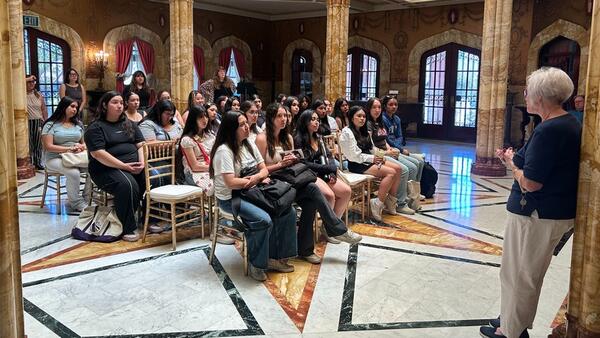Donald Trump’s second term in office continues to confound onlookers. Yet a growing number of universities around the world are offering courses for students to try to make sense of the mercurial president.
The University of Pennsylvania has launched Climate and Environment Journalism: Truth-Telling in the Trump Era through its English department and American Conservatism From Taft to Trump for political science students. The New School’s Donald Trump as History module will aim to explore the “Trump phenomenon” and how it alters views of U.S. history, while the University of Washington offers a special Trump in the World module.
Universities outside the U.S. are also involved. First run in 2017, Trumpism: An American Biography is an optional module for second-year history students at the University of Sheffield, which explores how U.S. history can shed light on the present.
Andrew Heath, lecturer in U.S. history at Sheffield, told Times Higher Education that part of the module’s purpose was to get students thinking about the history of terms such as populism that are “often thrown around in the media to make sense of Trump and Trumpism,” and to encourage them to think critically about the way that comparisons are invoked.
But teaching about such a fast-moving political situation is not easy. “It’s a module that always poses challenges—readings can quickly feel dated; teaching it in an election year last time around was harder. Every iteration of the unit needs significant updating,” added Heath.
Christopher Breem, managing director of the McCourtney Institute for Democracy at Pennsylvania State University, said it is always hard to teach about something going on in the present. But this is often what students are most interested in because they recognize that it is important to them and their future to understand it, he said.
“I think if you are up front with students that there are unavoidable risks associated with teaching any subject in real time, they accept that.”
Breem, who taught a course on Trump’s unorthodox campaign in 2016, said there are positive sides to it as well, allowing lecturers the opportunity to talk about populism in U.S. history, and about similar populist movements throughout the world.
“If you use Trump as an opportunity to talk about where we are and how we got here, you can end up with a really good class.”
The University of East Anglia is offering an optional module on MAGA: Donald Trump and Twenty-First Century America, University College Dublin has a Trump’s America option, and the University of Southern Denmark has one on U.S. society under Trump.
During the first Trump presidency, some academics came under an intense national spotlight for their courses that explicitly referenced him. One professor who previously taught a course mentioning Trump said the whole experience was “unpleasant,” with staff and the university receiving numerous phone calls and emails.
“The university took my information off the website, and we had a police officer outside of the classroom,” the professor said. “I turned on my house alarm during the day. Frightened, I turned down opportunities for press interviews.”
The academic, who wished to remain anonymous, said it was hard to keep up with the constant change and disruption of the Trump administration but that students were very engaged.
And they said academics have a professional and ethical responsibility to talk about Trump’s policies in classes, if it is related to course content, but should “tread carefully on how public you make it.”
However, Richard Lazarus, professor of law at Harvard University and course director for a module on environmental law under Trump, said he had “zero” worries about drawing the ire of the administration.
“We are not advocates who use our classes to tell students what action they should take. We are teachers and scholars who inform our students, give them the skills to think in a rigorous, disciplined way, and with integrity. They then decide how to use their skills.”
Other new courses for this year include the People’s Guide to Trumpism at the University of San Francisco and Trump vs. Science at Hampshire College.










